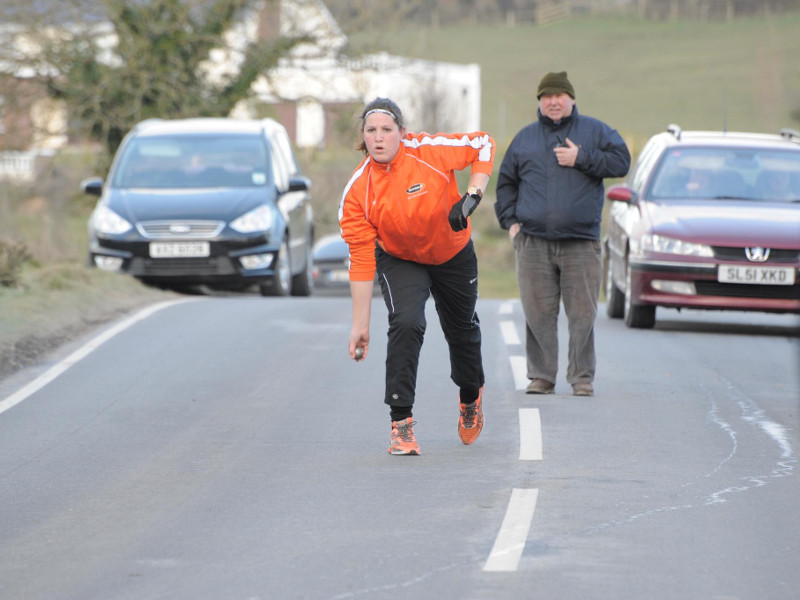Irish Road Bowling, a sport originating in 17th century rural Ireland, combines simplicity and strategy. Players hurl a heavy iron or steel ball, called a ‘bowl,’ along a designated country road, aiming to cover the distance with the fewest throws. This activity, deeply ingrained in Irish culture, emphasizes physical skill and fosters a sense of community among participants and spectators. Understanding the historical context and specific rules of this game sheds light on its enduring appeal and cultural significance. What unique elements distinguish Irish Road Bowling from other traditional sports?
Early References
Records from the 18th century indicate that road bowling was a popular pastime among rural communities in Ireland, with mentions in local chronicles and personal diaries. These historical references offer a glimpse into the communal and competitive spirit that surrounded the sport, reflecting its deep-rooted presence in Irish culture. The game, often played on winding country roads, was an occasion for social gatherings, nurturing a sense of camaraderie and local pride.
Equipment and Setup
To play Irish Road Bowling effectively, it’s essential to have the right equipment and setup. This includes a designated road or course, specialized bowling gear, and a structured competition format to ensure a fun and fair experience for all players.
Bowling Road and Course
An essential element of organizing a successful Irish road bowling event is, first and foremost, selecting the right route and equipment. Specifically, the route, known as the ‘road,’ should typically be a rural, winding public road. Furthermore, it should have varied terrain to provide a challenging and enjoyable competition.
Essential Bowling Gear
To ensure optimal performance on the challenging road terrain, having the right bowling gear is essential in Irish road bowling. The key equipment is the ‘bowl’ or ‘bullet,’ a 28-ounce iron or steel sphere measuring around 2.25 inches in diameter. This gear is designed to withstand the rugged surfaces of rural roads, allowing for long-distance throws. Additionally, players should have footwear with excellent grip, durable yet flexible clothing, a well-maintained scorecard, chalk or spray for marking, and an absorbent towel for keeping the bowl clean and dry.

Basic Gameplay
Irish Road Bowling involves players using a metal ball called a ‘bowl’ to navigate a set course with the fewest throws possible. The game demands strategic thinking and precise execution, highlighting players’ control and accuracy. The winner is determined by the player who finishes the course with the fewest throws.
Equipment and Setup
A regulation Irish road bowling game involves a 28-ounce iron or steel ball, known as a ‘bowl,’ and a rural road course typically measuring between two and four miles. This essential Irish sport thrives on simplicity and the rugged beauty of the countryside, making it a distinctive and liberating experience for participants.
Scoring and Objective
The main goal in Irish road bowling is to navigate the course with the fewest throws possible. Participants take turns rolling a 28-ounce iron or steel bowl along a set road distance, typically one to two miles. The competition tests skill, strategy, and accuracy as players aim to minimize their throw count to reach the finish line.
Scoring System
Scoring in Irish Road Bowling is primarily based on the number of throws required to complete a designated course. Consequently, the player or team with the fewest throws wins. Key scoring elements: throw count, rule violation penalties, progress markers, tie-breakers, and official scorekeeping. These aspects ensure fairness and accuracy throughout the game.
Key Strategies
Mastering throw techniques, understanding road conditions, and making strategic decisions are key components of successful Irish Road Bowling. The precision and force of the throw, along with adapting to different road conditions, play a vital role in determining performance. Tactical planning and communication also contribute significantly to navigating challenging stretches efficiently. Moreover, a combination of technical skill, environmental awareness, and strategic thinking is essential for excelling in this exhilarating sport. Overall, with proper coordination and a keen sense of the surroundings, athletes can effectively tackle the most demanding sections.

